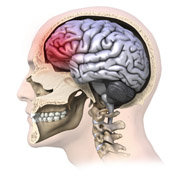Research and Innovation, UNL Office of

Center for Brain, Biology, and Behavior: Faculty Publications
Document Type
Article
Date of this Version
8-1-2017
Citation
2016 Elsevier Ltd.
Abstract
Dyslexia is a heritable reading disorder with an estimated prevalence of 5–17%. A multiple deficit model has been proposed that illustrates dyslexia as an outcome of multiple risks and protective factors interacting at the genetic, neural, cognitive, and environmental levels. Here we review the evidence on each of these levels and discuss possible underlying mechanisms and their reciprocal interactions along a developmental timeline. Current and potential implications of neuroscientific findings for contemporary challenges in the field of dyslexia, as well as for reading development and education in general, are then discussed.
Included in
Behavior and Behavior Mechanisms Commons, Nervous System Commons, Other Analytical, Diagnostic and Therapeutic Techniques and Equipment Commons, Other Neuroscience and Neurobiology Commons, Other Psychiatry and Psychology Commons, Rehabilitation and Therapy Commons, Sports Sciences Commons


Comments
Curr Opin Behav Sci. 2016 August ; 10: 45–58. doi:10.1016/j.cobeha.2016.05.006.